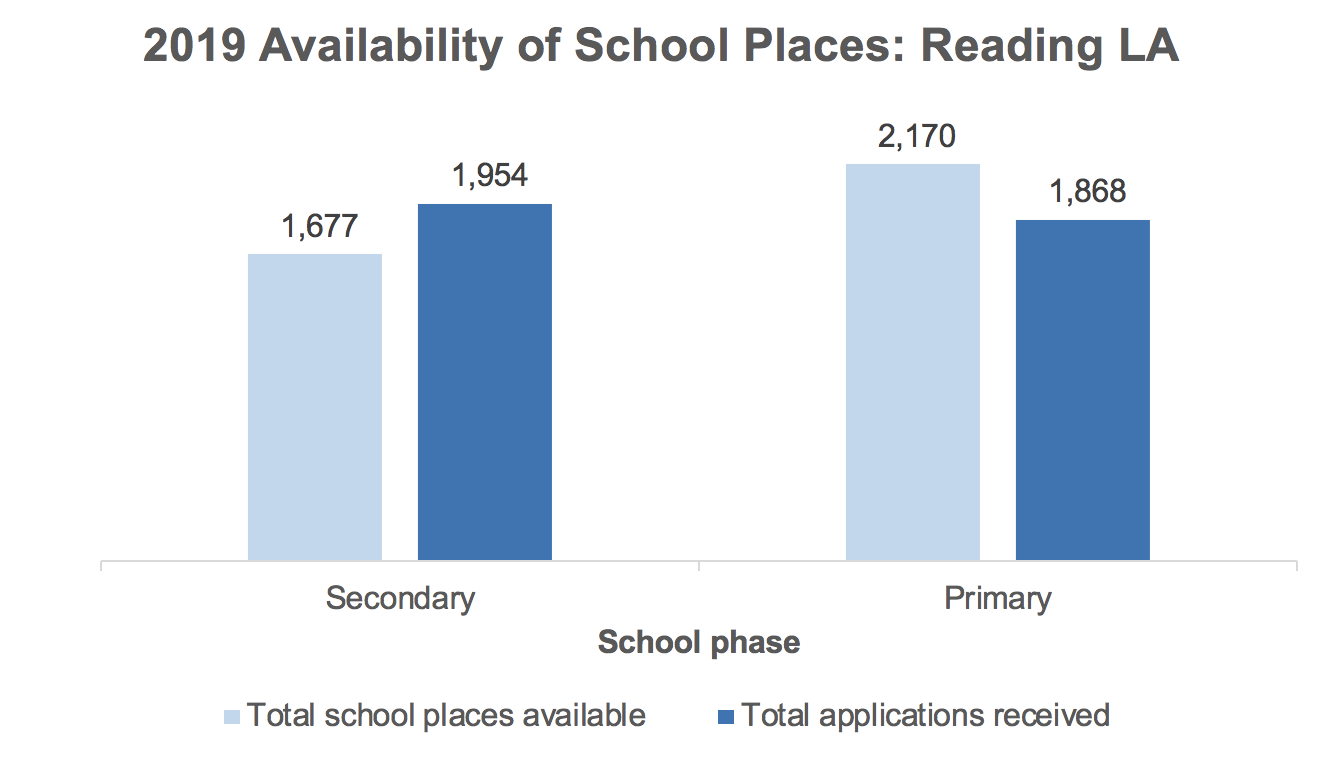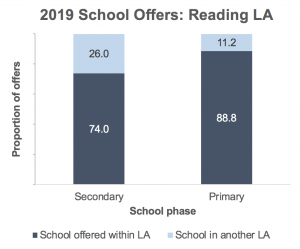
There has, however, been a greater fall against national in the first choice places offered at secondary school. In fact, only 15 out of 151 local authorities had a lower offer rate than Reading. The fall, from 66.3% in 2018, to 64.4%, is unsurprising, given the substantial lack of capacity in Reading secondaries. Over 500 children were placed in schools outside the local authority, and Reading secondaries created over 100 extra places through bulge classes to accommodate the remaining unplaced children. There is a real concern from secondary schools that the demand for places in 2020 will continue to remain high, being the second year of bulge classes leaving primary schools, yet those secondaries who took bulge classes this year are unlikely to be able to repeat the increased offer. A particular concern for parents and carers will be that 12.5% of them weren’t offered any of their preferred schools (2018: 12.3%): a trend that is surely set to continue.

